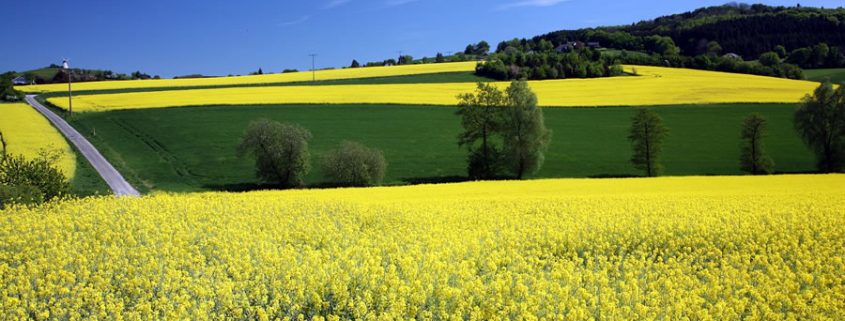Spain: The Return of the cultivation of rapeseed
Rape has returned to Spain to permanently stay, as more alternative in crop rotation required by the new Common Agricultural Policy (CAP). Only a decade ago barely existed in the field of our country, but its growth has been exponential.
This year, he has tolerated better than cereal rigors of drought, excessive heat and cold of late. In the autonomous community of Castilla and Leon they have been planted 18,825 hectares this year, which may provide some 44,520 tons of production, according to official estimates of the autonomous government, which implies a good campaign rapeseed yields.
Castilla y León has the largest extension. In Castilla y Leon in 2005 they grew less than 300 hectares, which gives an idea of the growing interest in this oilseed. Last year there were 16,347 hectares and 33,800 tons. In the whole of Spain, there are 44,651 hectares of rapeseed, according to the latest estimates of the Ministry, which means that Castile and Leon is by far the region with the largest surface -more than 42% – ahead of Catalonia (9,000 ) and Navarra (6000).
Almost 60% of the Spanish rapeseed is intended for animal feed in the form of flour, which is an important co-product of the extraction process the grain. The other product obtained after extraction is rapeseed oil (obtained approximately 40%), which in Central Europe is abundantly intended for human consumption.
In Spain there is little tradition to destine for human consumption. Most of rapeseed oil that is obtained in Olmedo (Valladolid) will be sold for the production of biodiesel, according to Javier Narvaez (ACOR), after pointing out that farmers have been ACOR maximum crop drivers. Across the EU, the extent of rape than 6.5 million hectares, with Germany (1.31 million hectares) and France (1.49 million hectares) in the lead.
Source: G.M.EFEAGRO







